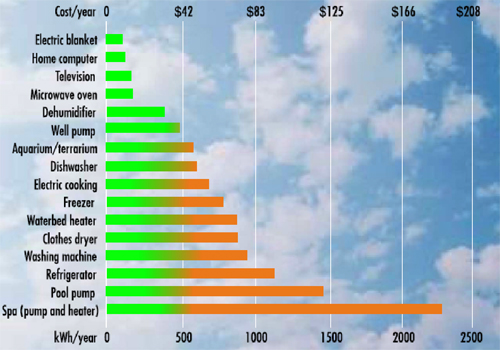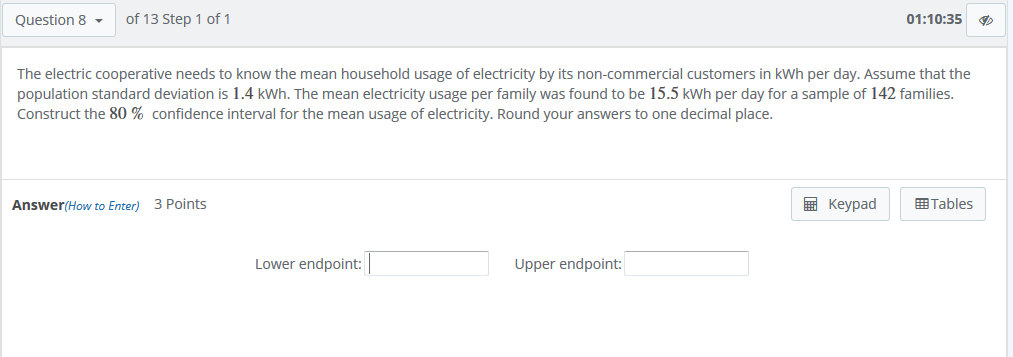


This means you could end up using additional energy when heating and cooling your home.

Older homes are often built with less-efficient materials that allow hot air to enter or escape. For example, larger homes tend to consume more energy than smaller homes because it takes more energy to heat and cool a bigger space. The size of your home will have an impact on your average home power usage. In order to figure out why your house uses more or less energy than the national average, it helps to first understand the factors that influence your consumption. If you’re not sure what a kilowatt-hour is, it’s simply the amount of energy it takes to keep a 1,000-watt appliance running for an hour. Your energy usage, though, is measured in kilowatt-hours (kWh).

This power is measured in kilowatts (kW). Since every house is built and lived in differently, each will consume a different amount of power. Factors that affect your home’s energy usage And once you’ve identified what’s having the biggest effect on your home power usage, you can then find ways to start reducing your consumption. But do you know how your home power consumption compares to the national average? You may be surprised by how much more energy you’re using than others.īy understanding your home power usage and how it compares to the average, you can check for any differences and what may be causing them. Read more about solar energy and definitions on our home page here.If you receive an energy bill each month, you likely already know how much energy you’re being charged for. Compare this to a friend’s house in Las Vegas who gets about 7,000 kWh per year.ĭefinitely worth checking out, even if you don’t think your area gets much sun! Surprisingly even here by Seattle my home still gets about 4,000 kWh of sun per year.
AVERAGE HOUSEHOLD ELECTRICITY CONSUMPTION KWH PER DAY CODE
It’ll spit out how many photovoltaic (PV) watts you need and is invaluable for getting a good estimate.Īlso for reference, the PVWatts calculator is excellent at showing you how much your zip code receives in sun. You just input the information we found out, your state, and how much electricity you want to produce. Now that you know how much electricity you use, we can start calculating how much you can offset with renewable energy.įor solar panels use this calculator at go green solar. So at first glance, kW and kWh seem like the same thing but they are in fact different units of energy or power. This way you can fully take into account the constant flickers of different appliances, lights, and units.Īs a result, it’s best to look at average power use, which is the average kilowatts per day or month. Your home is much more complex, but looking at your average kilowatts per day keeps it simple. The measure is the same for your home, just on a different scale. For example, a lightbulb is described as being 100 watts or 50 watts because that’s the rate at which it converts energy. Your bill is in kilowatts because that is the rate at which your home uses power. Kilowatt is a measure of power, 1,000 watts to be exact (kilo means 1,000). What’s the difference? Difference between kW and kWh You’ll notice that your electric company bills you per kilowatt, not kilowatt-hour. With this in mind, it’s time to pull out your home’s electric bill. This is just the average kWh per day, your daily figure swings quite a bit from season to season.īut from here we can begin to build a general idea of what your house is looking at as far as providing your own source of electricity. However, it’s hard to draw conclusions based on these stats. With the above numbers, 10,972 kWh divides into 914 kWh per month, and this calculates to an average of 30.4 kWh per day. It’s best for you to look at your own electricity bills to determine how much you and your house use per year, month and day. was 10,972 kWh per year.Įach state varies greatly, Tennesee came highest with 15,394 kWh and Hawaii lowest at 6,213 kWh. Energy Information Administration’s (EIA) 2018 report, the average electricity consumption in the U.S. One of the first hurdles in generating your own electricity is determining how much you need.Įach home is different, there are so many determining factors such as home efficiency, size, average outside temp, and more.


 0 kommentar(er)
0 kommentar(er)
